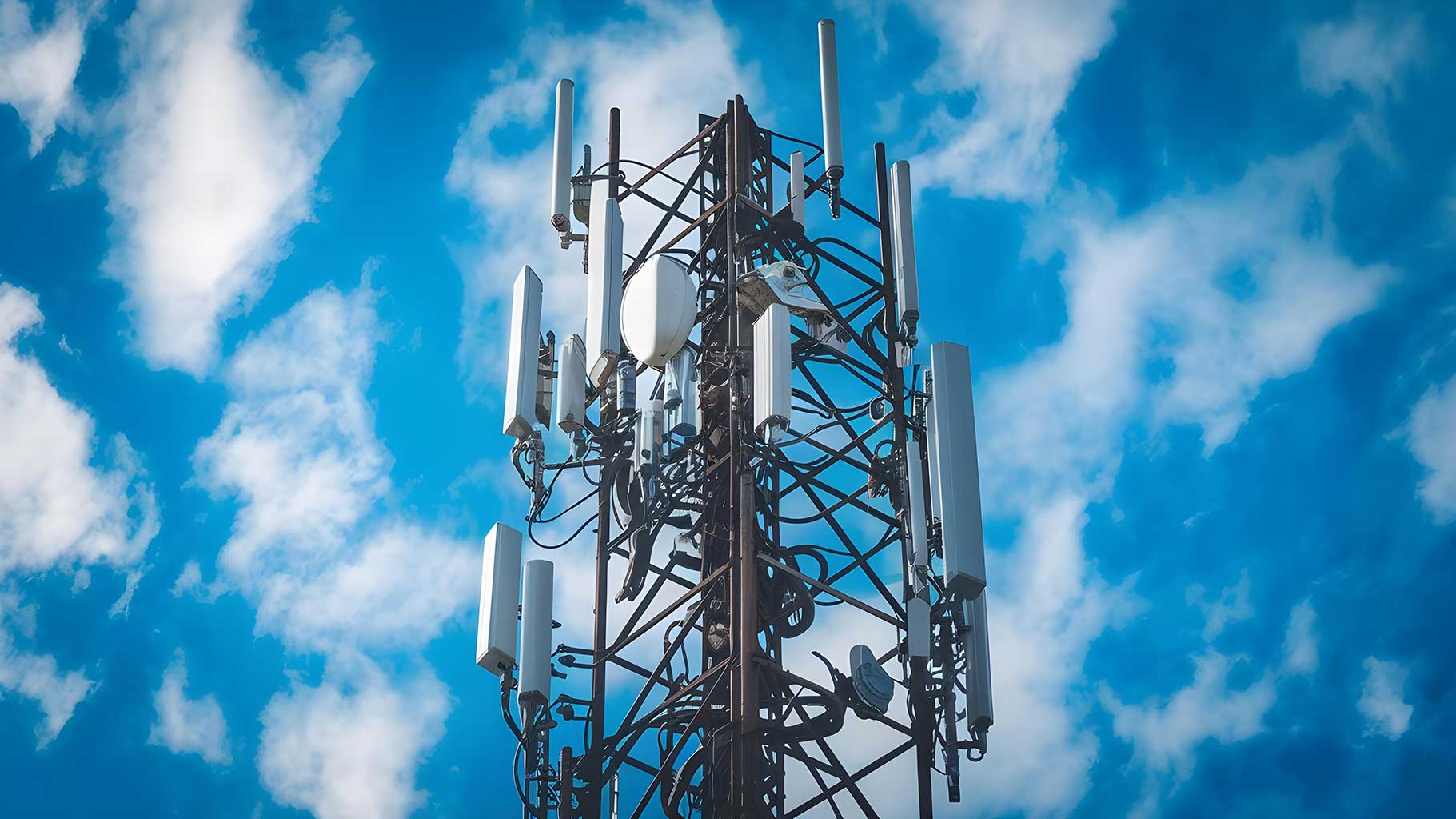Modernizing the Grid with 5G Technology for a Safer and More Reliable Future
Modernizing the Grid with 5G: SCE and Nokia Drive California’s Clean Energy Future

As California works towards its carbon neutrality goal for 2045, Southern California Edison (SCE) and Nokia have unveiled the electric industry’s first private 5G Field Area Network (FAN). This innovative network technology is designed to make the power grid safer, more reliable, and fully adaptable to California’s ambitious climate targets.
5G Field Area Network: Revolutionizing Grid Communication
The 5G FAN enables seamless communication between equipment, power lines, and substations, revolutionizing how the grid operates. SCE’s modernization efforts incorporate this secure, scalable 5G technology to ensure more efficient grid management. With remote monitoring capabilities, the FAN system reduces the need for physical interventions, allowing crews to quickly identify faults and optimize grid performance in real time.
Driving California’s Carbon-Neutral Vision
Investing in 5G technology strengthens California’s strategy to cut greenhouse gas emissions by 40% by 2030. The FAN not only supports integrating renewable energy sources but also bolsters the grid’s resilience and reliability, paving the way for a cleaner energy future in California.
The SCE and Nokia collaboration represents a leap forward in energy management innovation, setting a new global standard for efficiency in the utility sector.
Most Asked Question in the FAQ
5G (5)
5G Advanced: The Smarter, Faster Future of Wireless Networks
What Is 5G Advanced and Why It Matters
5G Advanced, also called 5.5G, is the next major step in wireless technology. While it builds on the original 5G standards, it also introduces new improvements in speed, responsiveness, and efficiency. As a result, it promises smarter networks and stronger performance. Most importantly, it meets the growing demand for better connectivity across industries. 5G Advanced is not just faster—it is more intelligent. In addition, it supports cutting-edge technologies like AI, edge computing, and the Internet of Things (IoT). Therefore, it is set to power the connected experiences of tomorrow.
Smarter Speeds and Seamless Connections
With 5G Advanced, speed and reliability reach a new level. Not only does it deliver faster data rates, but it also reduces latency and improves overall network responsiveness. As a result, users can enjoy smoother experiences—whether they are streaming video, gaming online, or working remotely. Moreover, better spectrum efficiency means networks can serve more users at once, without compromising quality.
More Devices, Less Delay
As our world becomes more connected, networks must handle more devices. Fortunately, 5G Advanced supports massive connectivity with ease. For example, enhanced beamforming and improved Massive MIMO technologies allow signals to reach farther and perform better in crowded areas. In addition, coverage in rural zones, buildings, and underground locations will improve significantly. Therefore, it’s ideal for cities, smart homes, and industrial environments.
AI, IoT, and the Edge
Beyond speed, 5G Advanced focuses on intelligent integration. It works closely with Artificial Intelligence, Machine Learning, and edge computing to deliver faster, real-time decisions. As a result, networks become more adaptive and efficient. For instance, in IoT-heavy industries, this means faster responses, greater safety, and optimized automation. Furthermore, these smarter systems can adjust on the fly, improving performance even in complex scenarios.
Greener, Smarter Networks
In addition to performance, 5G Advanced is built with sustainability in mind. Thanks to more efficient hardware and smarter network management, energy use can be reduced. This allows operators to expand their infrastructure without increasing environmental impact. Consequently, businesses and governments alike can grow digital services while meeting sustainability goals.
What’s Next for 5G Advanced?
Currently, 5G Advanced is in the research and standardization phase. However, industry leaders and academic institutions are working together to define its full potential. Once standards are finalized, adoption will likely accelerate across global markets. Most importantly, 5G Advanced will help enable the next generation of digital innovation—from immersive apps to autonomous systems. So, while it’s still evolving, the future of wireless connectivity is already taking shape.
5G RedCap (Reduced Capability) is a new feature introduced in the 3rd Generation Partnership Project (3GPP) Release 17. It is designed to cater to devices that require higher capabilities than those offered by LTE-M or NB-IoT (both are narrowband IoT technologies), but do not need the full capabilities of standard 5G devices. This makes 5G RedCap particularly suitable for a specific segment of IoT and industrial applications. Key aspects of 5G RedCap include:
- Lower Device Complexity: 5G RedCap aims to reduce the complexity and cost of devices compared to full-featured 5G devices. This is achieved by scaling down certain aspects of the 5G technology.
- Moderate Data Rates: While offering lower data rates than the full 5G standard, 5G RedCap still provides higher data rates than narrowband IoT technologies, making it suitable for applications that require moderate bandwidth.
- Energy Efficiency: With its reduced complexity, 5G RedCap also aims to improve energy efficiency, which is crucial for battery-powered IoT devices.
- Broad Applications: This technology is ideal for a range of IoT applications, including wearables, industrial sensors, and certain types of smart meters that need more capability than NB-IoT or LTE-M but do not require the high data rates and full capabilities of 5G.
- Network Compatibility: 5G RedCap is designed to be compatible with existing 5G networks, enabling seamless integration with the current infrastructure.
- Balanced Performance: The key advantage of 5G RedCap is its balanced performance, offering better capabilities than narrowband technologies while avoiding the complexity and cost of full 5G.
In summary, 5G RedCap represents an important step in the evolution of 5G and IoT, bridging the gap between narrowband IoT technologies and full 5G, and providing a more cost-effective and efficient solution for a wide range of IoT applications.
5G Fixed Wireless Access (FWA) is a method of providing wireless broadband internet services to homes and businesses using 5G cellular network technology. It is an alternative to traditional wired broadband like DSL, cable, or fiber optics. Here are key aspects of 5G FWA:
- Use of 5G Technology: 5G FWA utilizes the high-speed and low-latency capabilities of the 5G network to deliver internet services.
- Wireless Connectivity: Unlike traditional broadband that requires physical wiring, FWA uses wireless signals to connect users to the internet. This can significantly reduce the need for extensive physical infrastructure.
- Deployment Ease: FWA is particularly beneficial in areas where laying cables is challenging or not cost-effective. It allows for rapid deployment of broadband services in rural or underserved areas.
- High-Speed Internet: With 5G technology, FWA can offer comparable, and in some cases, superior speeds to wired broadband solutions, suitable for high-bandwidth applications like streaming, gaming, and video conferencing.
- Network Infrastructure: The setup typically involves a 5G modem or router at the user’s location, which communicates with the nearest 5G cell tower to provide internet connectivity.
- Cost-Effectiveness: For network providers, FWA can be a more cost-effective way to expand broadband access, especially in less densely populated areas.
- Improved Capacity and Range: Leveraging advanced 5G technologies like beamforming and Massive MIMO, FWA can offer improved capacity and range compared to earlier wireless technologies.
5G FWA is seen as a key component in the broader rollout of 5G, offering a flexible and efficient way to expand broadband access and bridge the digital divide, particularly in regions where wired infrastructure is lacking or insufficient.
How Ultra-Reliable Low-Latency Communications Are Powering the Future of 5G
What Is Ultra-Reliable Low-Latency Communications (URLLC)?
Ultra-Reliable Low-Latency Communications, or URLLC, is a core 5G feature that enables real-time, dependable wireless connections. It supports applications needing both near-zero delay and ultra-high reliability. URLLC stands alongside Enhanced Mobile Broadband (eMBB) and Massive Machine-Type Communications (mMTC) as a key 5G use case. Its main goal? Deliver fast, flawless data transmission. With latency reduced to just milliseconds and success rates near 99.999%, URLLC is built for critical services that can’t afford delays or errors.
Why URLLC Matters for Critical Applications
URLLC isn’t just fast—it’s life-saving. It’s essential for applications like autonomous vehicles, remote surgery, and industrial automation. These systems depend on split-second communication that won’t fail under pressure.
Low Latency and High Reliability
In traditional networks, delays can stretch to tens of milliseconds. URLLC cuts this drastically, achieving response times as low as 1 millisecond. At the same time, it guarantees nearly perfect transmission, which is crucial for safety-focused tech.
Powered by 5G Innovations
5G enables URLLC by using technologies like edge computing, beamforming, and advanced modulation. These help reduce delays and improve stability. Network slicing allows dedicated sections of the network to serve URLLC traffic, ensuring it always gets priority.
Efficient Spectrum Use and Standards
To meet strict performance demands, URLLC maximizes spectrum use through OFDMA and similar methods. It’s also built into the official 5G standards from 3GPP starting with Release 15, which lays the foundation for future upgrades.
Ultra-Reliable Low-Latency Communications are key to unlocking the next wave of smart, responsive technology. As 5G expands, expect URLLC to drive everything from smart cities to safer roads and smarter factories.
CBRS (Citizens Broadband Radio Service) in the context of 5G-Advanced refers to an innovative approach in wireless communication where the CBRS spectrum is utilized for advanced 5G applications. CBRS operates in the 3.5 GHz band (3550 MHz to 3700 MHz) in the United States and is designed to offer a shared spectrum model. This approach is significant in the evolution of 5G networks for several reasons:
- Shared Spectrum Access: CBRS uses a three-tiered shared spectrum access system, allowing for efficient use of the 3.5 GHz band. This system includes Incumbent Access, Priority Access, and General Authorized Access.
- Enhanced Capacity and Coverage: By leveraging the CBRS band, 5G-Advanced networks can enhance capacity and coverage, particularly in densely populated areas or for enterprise use cases.
- Flexibility and Cost-Effectiveness: CBRS offers a more flexible and cost-effective way for organizations to deploy private 5G networks, as it reduces the need for purchasing exclusive spectrum licenses.
- Innovation in Wireless Services: The utilization of CBRS in 5G-Advanced paves the way for innovative wireless services and applications, including IoT deployments, industrial automation, and enhanced mobile broadband.
- Improved Network Performance: The CBRS band is well-suited for 5G use due to its balance between coverage and capacity, making it ideal for a variety of applications from urban to rural deployments.
- Regulatory Framework: The Federal Communications Commission (FCC) has established rules for CBRS, promoting efficient use of the spectrum while protecting incumbent users.
- Compatibility with Existing Technology: CBRS can be integrated with existing LTE and 5G NR technology, allowing for seamless adoption and integration into current network infrastructures.
CBRS 5G-Advanced represents a significant step in diversifying the spectrum usage for 5G, offering new opportunities for network operators, enterprises, and other entities to deploy flexible and efficient 5G solutions.



































































